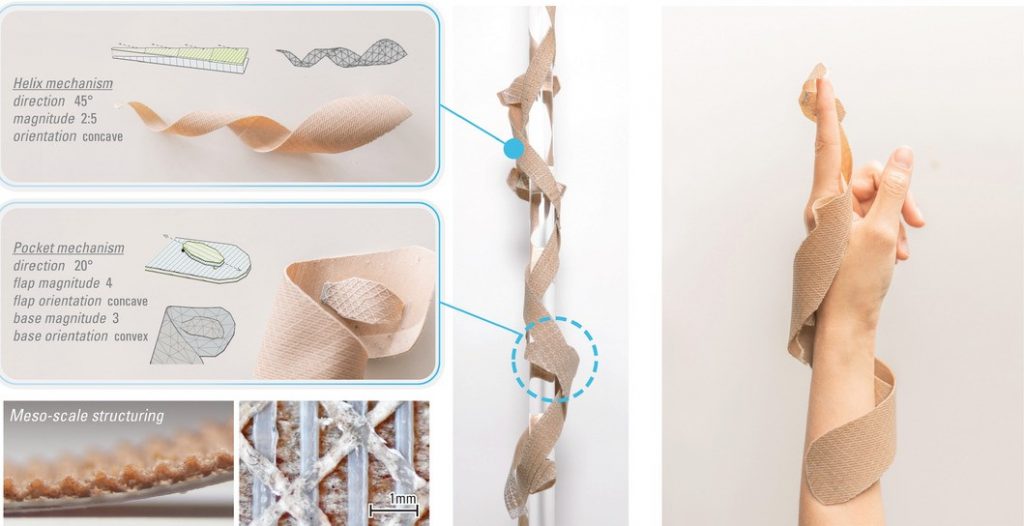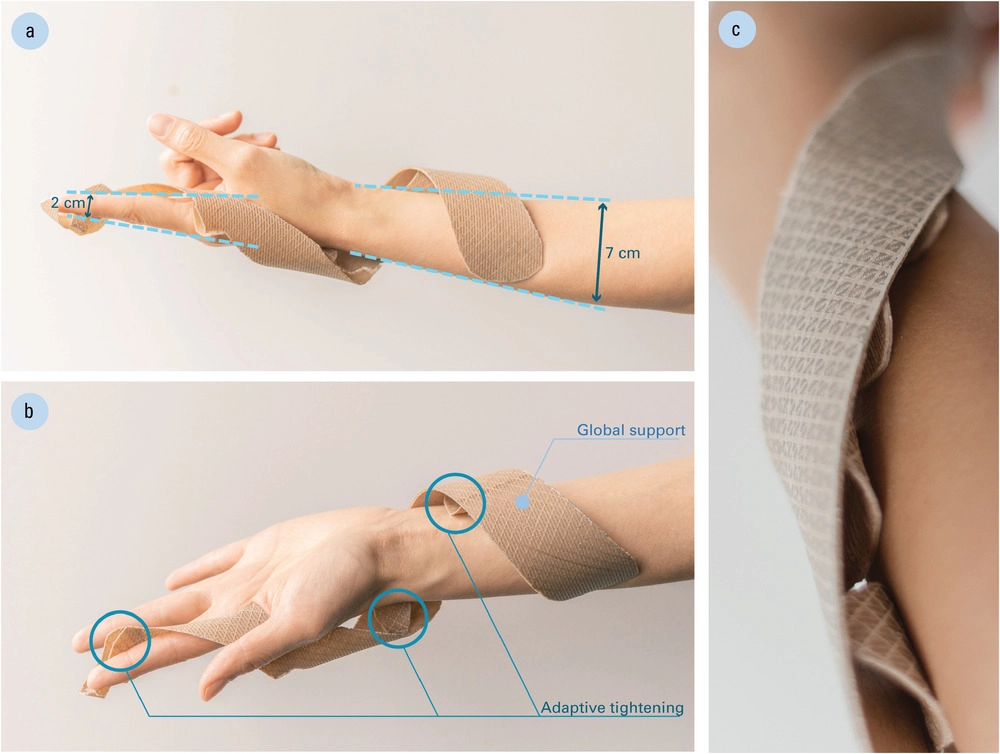The nominations for the 2021 3D Printing Industry Awards are now open. Who do you think should make the shortlists for this year’s show? Have your say now.
Researchers from the University of Freiburg and the University of Stuttgart have developed a novel method of 4D printing wearable medical devices that self-adjust to the anatomy of the patient.
Inspired by the propagation mechanism of the air potato plant (Dioscorea bulbifera), the printed systems can be pre-programmed to carry out complex movements when exposed to moisture. The team has already leveraged the approach to 4D print a self-tightening orthotic wrist splint, one that wraps around the arm of the patient on its own.
Tiffany Cheng, co-author of the study, told Materials Today, “We showed how functional and structural principles from biology could be transferred to technical material systems. Our work constitutes an important step in expanding the design space and tunable functionality of bio-inspired solutions.”

Bio-inspired 4D printing
When the shape of a 3D printed structure is designed to morph over time, it’s referred to as 4D printing. These geometry shifts can be induced in any number of ways, with some of the most common being electrical stimulation, heat, and moisture. Many 4D printed objects are pre-programmed to morph using intelligently placed layers and folds, which can contract and expand to give the desired effect.
Incidentally, we can learn a lot about 4D printed systems by drawing inspiration from mother nature – evolution is one of the best designers out there, after all.
In this case, the Freiburg team turned to the air potato, a vine plant capable of climbing trees by winding itself around the trunk of the host. Air potatoes sprout outgrowths called stipules, which help tension the winding stem and exhibit a squeezing force on the host plant. This allows the air potato to work its way up its host, bringing it closer to that much-needed sunlight.
A 4D printed, self-tightening wrist splint
In a bid to emulate the movement mechanism of the air potato, the researchers employed a computational design strategy that involved selectively printing ‘bend lines’ into the geometry of the splint itself. Like creases in a piece of paper, these bend lines are designed to determine how, where, and to what degree the splint will bend when exposed to moisture.
Material choice was also crucial here, as the actuation of the splint would only be possible with a material responsive to moisture. For this, the team had to use a wood-polymer composite that absorbed and released moisture with ease.
The printed structure also included several swelling and stabilizing layers that work in conjunction with the bend lines to achieve a coiling helix-like form. Additionally, the team printed pockets on the surface of the splint, which serve to push the helix outwards to create tension in the device, ultimately resulting in the contraction of the entire splint. This enables the device to tighten around the arm of the wearer for a personalized, snug fit, providing support for the wrist.
The study concludes, “Through proving this concept with a working prototype of a common orthotic device, we envision that this design process might enable medical experts to physically design, prototype, and custom-fit self-adjusting orthotic devices without any specialized knowledge in digital modeling.”
Further details of the study can be found in the paper titled ‘Bio-Inspired Motion Mechanisms: Computational Design and Material Programming of Self-Adjusting 4D-Printed Wearable Systems’. It is co-authored by Tiffany Cheng, Marc Thielen et al.

The applications of 4D printing go far beyond the medical sector, with soft robotics and electronics also on the cards. A team of researchers from Linköping University, Sweden, has previously 4D printed a set of microactuators for soft microrobots using a custom-built extrusion-based 3D printer. While 4D printed soft robots are usually limited to the centi- or milli-scale, the team was able to scale down the printed devices to the micron domain, achieving thicknesses in the region of about 20 microns.
More recently, German electronics 3D printing firm Neotech AMT announced a new EU-backed Penta project AMPERE, which seeks to develop reliable and scalable hybrid additive manufacturing processes for producing multi-functional 4D mechatronic systems. The project will focus on accelerating 4D manufacturing to expedite the reliable production of smart systems for lighting, signal and power electronics, and more.
Subscribe to the 3D Printing Industry newsletter for the latest news in additive manufacturing. You can also stay connected by following us on Twitter, liking us on Facebook, and tuning into the 3D Printing Industry YouTube Channel.
Looking for a career in additive manufacturing? Visit 3D Printing Jobs for a selection of roles in the industry.
Featured image shows the 4D printed wrist splint. Image via University of Freiburg.


